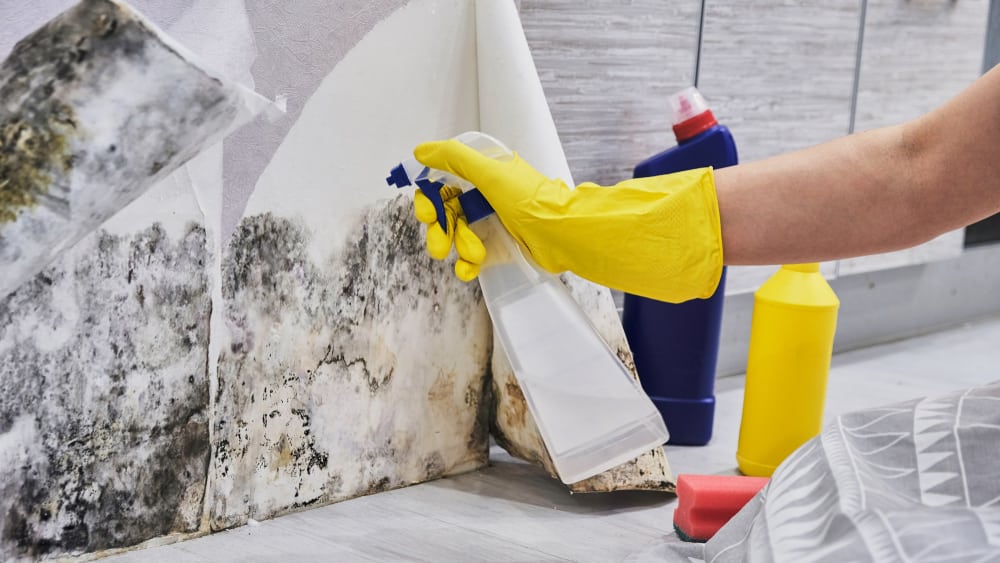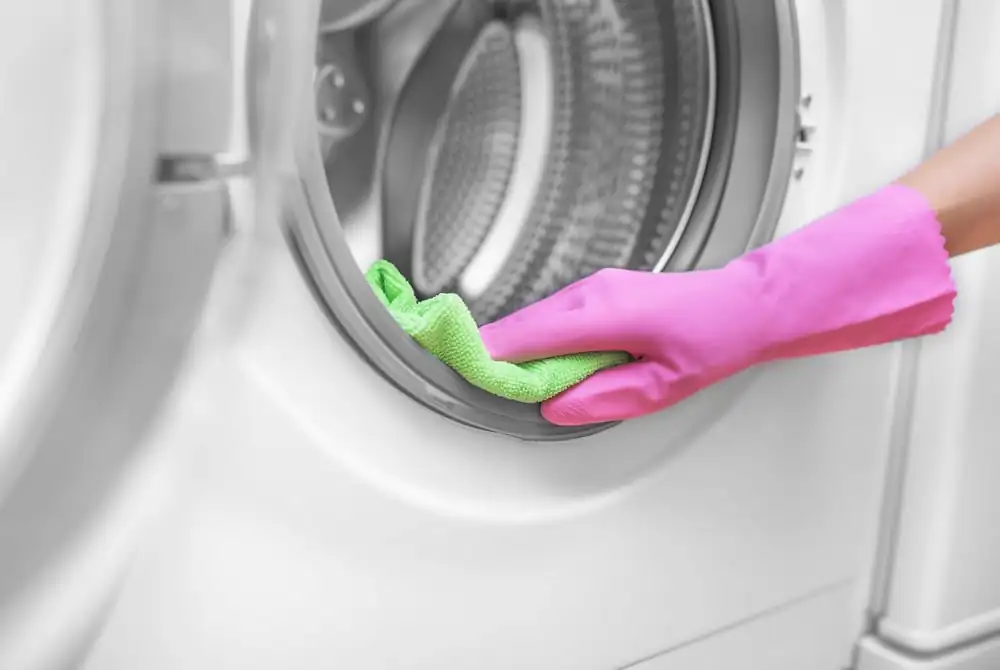
Does Bleach Kill Mold?
Mold can be killed by bleach if it is able to penetrate the surface. Bleach does not penetrate porous surfaces well, which is why the ‘bleach doesn’t kill mold’ myth exists. Therefore, if you have mold on wood, it is likely there is mold within the wood itself, and sterilizing the surface of the wood will not affect the mold and spores beneath.
The use of vinegar and hydrogen peroxide will also kill mold, but both do a better job of getting into porous surfaces, and are non-toxic, so you can leave them on the surface for a prolonged period of time while they penetrate.
What’s the best way to kill mold? Bleach? | Does Bleach Kill Mold?
Mold can be killed by bleach if it is able to penetrate the surface. Bleach does not penetrate porous surfaces well, which is why the ‘bleach doesn’t kill mold’ myth exists.
You can find mold almost anywhere, but it needs moisture to grow. The smell of mold may first alert you, or you may find patches of black, brown, yellow, pink, green, fuzzy growths.
Mold can be easily removed from tub and tile surfaces with bleach, since they’re hard and impervious. Bleach can’t kill mold on porous surfaces, like wooden surfaces.
The reason for this is that mold spreads deep into porous surfaces. Mold will continue to grow beneath the surface even after you use bleach and wipe it off, so it will come back soon after you clean the area.
How to remove mold from nonporous surfaces with bleach |Does Bleach Kill Mold?
Despite the fact bleach doesn’t remove mold from porous surfaces, it still works on nonporous ones.
Here are some steps you can take:
Use a window fan or open your doors and windows to let in some fresh air.
Make sure you’re wearing protective gear, like gloves, masks, and eye goggles.
Add 1 cup of bleach to 1 gallon of water.
Fill a spray bottle with the mixture.
Spray it on the mold and let it dry.
A stiff brush is recommended if surfaces are rough.
Dry the surfaces by air drying after rinsing them with clean water.
Immediately throw away any sponges or cloths that have been used.
When you use bleach to kill mold, there are some health concerns
Although household bleach isn’t toxic or corrosive, prolonged exposure may cause irritation to the eyes, mouth, lungs, and skin. When you have a respiratory condition like asthma, it might be even worse.
Due to bleach’s reactive nature, most health concerns are associated with it.
Besides reacting with ammonia, bleach can also release chlorine gas when in contact with drain cleaners and other acids. Low levels can irritate mucous membranes, resulting in coughing, breathing issues, watery eyes, and runny noses.
As a result of inhaling large amounts of chlorine gas, the following health effects may occur:
chest pain
severe breathing problems
fluid in the lungs
pneumonia
vomiting
The immediate exposure to bleach can also damage your skin, especially if you do not rinse it off afterward. Whenever you use bleach, use gloves, regardless of how much water it has been diluted with. You should immediately rinse your skin if it splashes on you.
Nontoxic alternatives for cleaning mold
Luckily, there are many nontoxic options for mold cleanup on both porous and nonporous surfaces.
A hydrogen peroxide solution. Spray a solution made up of 1 part hydrogen peroxide and 1 part water into a spray bottle. Before removing mold, apply the solution and allow it to sit for a few minutes.
Bleach contains a lot of water and may stimulate mold growth if you use it to kill mold on soft materials. The water in the bleach is absorbed by the material, feeding the mold that survived inside it. Consequently, mold may regrow on the surface within a week or two if the material isn’t dried properly. You can thus end up in a cycle of repeatedly trying to bleach mold, only to have it persistently return.
Not only is bleach ineffective against mold on wood, it’s also corrosive and extremely harmful to these materials. Wood that is treated with bleach becomes weakened by breaking down its fibers. This can compromise the structural integrity of your home.
Bleach loses its power with time – it is 50% less effective in 90 days even if its container is not opened.
Using bleach can damage your health. Bleach can give you burns if it touches your skin, and the gas from bleach can harm your lungs. Contact with eyes may cause pain and irritation. Bleach can also damage the eye tissues if it stays for a longer time.
Dead mold may still cause allergic reactions in some people. Thus, it’s not enough to simply kill the mold, it must also be removed.
So what are the alternatives? If you have a small mold infestation (less than 10 square feet), use natural mold killing products, such as borax, vinegar, or a simple solution of detergent and water, baking soda, and tea tree oil. These substances don’t pose a threat to your health.
And remember, after the surface has been cleaned, it must be dried properly. Drying is the key to keeping mold growth in check. If you have a larger mold problem, seek professional help from a mold remediation company. They can properly remove mold and dry the area to ensure mold doesn’t return.
For mold removal and water damage repair services, contact PuroClean of Lansdale.
Instagram | Facebook | Direction | Check Reviews
FAQ
How do you avoid water damage in your home?
[VIDEO] You can avoid water damage by cleaning gutters and downspouts, checking your appliances regularly, upgrading washing machine hoses, checking your water pressure, monitoring your water bill, etc. […]What is involved in reconstruction?
Reconstruction may involve electrical, drywall, carpentry, or painting, flooring, cabinetry, roofing, permit acquisition, replacement or installation, project management or inspections and will depend on the scope of work to be […]Read more […]
How do I clean furniture after a fire?
[VIDEO] To remove soot and smoke from walls, furniture and floors, use a mild soap or detergent or mix together 4 to 6 tbsp. tri-sodium phosphate and 1 cup household […]What should I do with the water that was used to put out the fire?
Water can lead to more damage such as mold growth. Reputable restoration companies also extract the water from the damaged area as part of the fire restoration job. […]Read more […]
Can black mold cause brain damage?
Mold has been been associated with many aliments. You should consult with your doctor or your medical team if you are ill or have adverse symptoms. […]
FAQ
Can mold grow on concrete floors?
Not usually. Mold will not grow without a lot of moisture, so keeping your concrete floors clean and dry should prevent mold growth. […]
Does renter’s insurance cover mold damage?
Every Insurance policy is different. You should contact your broker/agent or your insurance company to determine the amount of coverage that you have. […]
How do I prevent mold in my bathroom?
The biggest step is to be sure the bathroom has adequate ventilation. It is important to have a properly installed exhaust fan. […]
Should I buy a house with mold?
Yes, you can. But before occupying it, you should have the mold removed. If the mold is visible, then a mold remediation company like PuroClean can remove it. If it […]
Am I exposed to mold?
If there is mold growing in your home, you can be exposed to it. When mold is disturbed, it releases spores into the indoor air that you breathe. Other forms […]Read more […]




 PuroClean of Lansdale
PuroClean of Lansdale